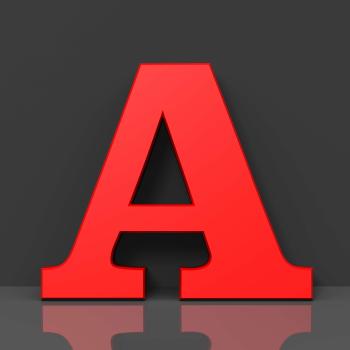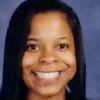Using Children's Natural Curiosity to Lead to Descriptive Writing

- Preview |
- Standards |
- Resources & Preparation |
- Instructional Plan |
- Related Resources |
- Comments
Overview
Inspired by the book It Begins with an A, this minilesson invites kindergartners to combine their experiences with familiar objects and descriptive writing by making a class book. First, during a reading of It Begins with an A, students discuss descriptive works, number words, size words, and other words that describe objects in the book. Next, students practice by giving three clues that describe familiar objects named by the teacher. Students are encouraged to develop more specific and descriptive clues. Then, each student thinks of an object and draws it on the back of a sheet of paper. On the front of the paper, they write three clues that describe the object. Finally, the completed pages are combined to create a book that can be shared with family members and peers before adding it to their classroom library.
From Theory to Practice
In her article "Letting Go of 'Letter of the Week,'" Donna Jarvis explains: "I quickly learned that one-to-one interactive writing was a powerful way to celebrate what children already know while assessing their knowledge, thus providing immediate support tailored to each child's need." This lesson expands on this idea, as students demonstrate that: young children can develop a sense of the relationships between letters and sounds when they are engaged in writing for a meaningful purpose, and new learning develops by connecting familiar to new information.
Further Reading
Common Core Standards
This resource has been aligned to the Common Core State Standards for states in which they have been adopted. If a state does not appear in the drop-down, CCSS alignments are forthcoming.
State Standards
This lesson has been aligned to standards in the following states. If a state does not appear in the drop-down, standard alignments are not currently available for that state.
NCTE/IRA National Standards for the English Language Arts
- 3. Students apply a wide range of strategies to comprehend, interpret, evaluate, and appreciate texts. They draw on their prior experience, their interactions with other readers and writers, their knowledge of word meaning and of other texts, their word identification strategies, and their understanding of textual features (e.g., sound-letter correspondence, sentence structure, context, graphics).
- 4. Students adjust their use of spoken, written, and visual language (e.g., conventions, style, vocabulary) to communicate effectively with a variety of audiences and for different purposes.
- 5. Students employ a wide range of strategies as they write and use different writing process elements appropriately to communicate with different audiences for a variety of purposes.
- 12. Students use spoken, written, and visual language to accomplish their own purposes (e.g., for learning, enjoyment, persuasion, and the exchange of information).
Materials and Technology
- A copy of the book It Begins with an A by Stephanie Calmenson
- Crayons, pencils, and a blank sheet of paper for each student
- Chart paper
Preparation
- Get the book It Begins with an A by Stephanie Calmenson.
- Each student will need crayons, pencil, and a blank sheet of white paper.
- Use an easel or tape a large piece of chart paper to the wall/board.
Student Objectives
Students will
- listen to a story and focus on the clues used to describe each object.
- think of a familiar object and draw it.
- develop three descriptions for the object.
- write a description of each object with assistance from an adult or peer.
Instruction & Activities
- Begin by reading It Begins with an A aloud to the class.
- While reading the book, be sure to point out descriptive words (i.e. color words, number words, size words) that describe the object. Discuss the word choice that is used and the ways that the diction helps make each clue effective.
- After reading and discussing the book, practice describing objects with the group. For example, name a familiar object (for instance, an apple) and ask the students to give three clues to describe it. For this example, they might respond with "it is red, you eat it and it is a fruit." Another student may recognize that these descriptions also apply to a cherry or strawberry.
- Use this as a teachable moment and probe and ask the students to rethink their clues. The second time they should develop more specific clues such as "it can be red or green or yellow, it is a fruit and it grows on a tree."
- Write each of the three descriptions on the front of chart paper; then draw the object on the back of the paper. Repeat this process as necessary.
- Tell students that they will share their clues with one another and judge them for effectiveness before they are published. Peer editing such as this encourages students to be specific and precise when writing for an audience.
- Ask students to get an object from the classroom to describe. Actually obtaining and manipulating the items allow kindergartners to use their five senses to really get in touch with the objects. This may lead to the development of better descriptive writing.
- Ask students to develop three clues to describe the object, to write the clues on one side of the piece of paper (with assistance as necessary), and to draw a picture of the object on the other side of the piece of paper.
- Help each student develop and write descriptions of the object.
- After students from each group have completed a page, combine all of the pages, and add a cover to make a classroom book.
- Establish a schedule to allow each student the opportunity to take the book home and share it with family members.
Extensions
- Encourage students to read the book to the principal, librarian and other kindergarten classes.
- Encourage students to develop more than three clues to describe objects.
- Ask classmates or peer-tutors from other grade levels to assist with the writing process.
- Make a Guess Book of objects that begin with the letter T or other specific letters.
- E-mail three clues to friends and family members and ask them to guess the object. They can then reciprocate to make for ongoing email interactive fun.
- Make a Guess Book of objects that can be found in your classroom.
- Ask each student to write three clues and draw a picture of an object found at home.
- Publish clues and answers using the Flip Book student interactive:
- On the odd pages, students can use the "All Text" layout to type their clues.
- On the even pages, students can use the "Drawing" layout to draw the answer.
- On the odd pages, students can use the "All Text" layout to type their clues.
- Extend this lesson with the National Geographic Xpeditions lesson Who Am I?, which uses a similar guessing game to explore animals that live in the desert.
Student Assessment / Reflections
- Working with individual students within this small group setting will allow you to do on the spot, authentic assessments. You will be able to gauge which students need help with letter recognition, letter sounds, letter writing and writing words.
- It will also allow you to challenge students on various developmental levels. For example, students who need help with letter recognition can get practice by naming letters as you write them. Students who need help with letter sounds can do so by helping sound out words. This activity also encourages students who can write words to apply their skills when writing three descriptions.

Add new comment